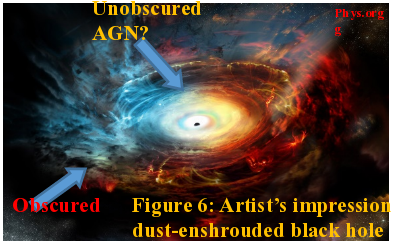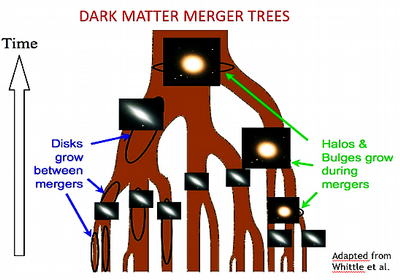|
The last 20 years have witnessed a paradigm shift in the way the scientific community approaches two fundamental questions of astrophysics, how do galaxies evolve and what are the processes responsible for the formation of black holes, arguably the most extreme objects in the Universe. Observations revealed that supermassive black holes of a million to a billion solar masses are lurking in the cores of most galaxies, including our own Milky Way. Unexpectedly tight correlations have been discovered between the masses of these black holes and mass proxies of the stellar component of the host galaxy bulges. This is remarkable given the large difference in the scales involved. The stellar component of galaxy bulges extends to distances 100 to 1000 times larger than the gravitational sphere of influence of the central black hole. The very existence of these correlations suggests that the galaxy bulges and the supermassive black holes at their centres share a common evolutionary history, which still remains elusive. It is of paramount importance to understand how supermassive black holes form to have a complete picture of galaxy evolution and, vice-versa, the growth of black holes at the centres of galaxies can only be studied in the context of galaxy formation. The research field of black-hole and galaxy (co-)evolution has expanded dramatically in recent years bolstering with new observational and theoretical evidence on the relation between black holes and galaxies.
In popular, but still highly debated, models, a supermassive black hole rapidly grows via gas accretion within a highly starforming, gas-rich, dust-enshrouded galaxy (infancy), possibly triggered by a merger and/or cold flow. The dust-enshrouded black hole grows, shining as an (X-ray/IR) Active Galactic Nucleus (AGN), and possibly launching powerful winds (adolescence). Around the peak of the AGN light curve such winds may halt star formation in the host galaxy via removal/heating of the gas (AGN feedback), self-regulate black hole growth, ultimately setting the scaling relations with its host galaxy. The host then transitions from a dusty, IR/submm galaxy, to an optical/UV quasar (adulthood), eventually fading into a low starforming galaxy. This popular evolutionary picture needs to be framed against orientation models in which obscured AGN are strictly those sources viewed close to edge-on, where more dust resides. Additionally, besides mergers, secular processes (disc/bar instabilities) may also be efficient triggers of bulge and black hole growth. Many AGN seem to be associated with non-merging galaxies.
|

|
Galaxy properties and AGN
This WP addresses the question: What galaxy and environment properties facilitate accretion onto the black holes? The focus of this comprehensive WP is on AGN host galaxies and their environment. We will exploit all the latest panchromatic surveys of AGN in the optical (SDSSIV, BOSS, and JPAS), X-rays (XXL, Stripe82X, XMM-Slew, ROSAT), IR (All WISE) and multiwavelength (LeMMINGs, for which SOTON has preferential access) - which are dominated by AGN in the adulthood peak/post-peak prolonged phase, most appropriate to maximize AGN occurrence in galaxies. Advanced Bayesian inference/Monte Carlo routines will efficiently account for multiple selection effects providing new and de-biased AGN luminosity functions, accretion rate densities, and spatial clustering. Cutting-edge deep-learning methods will be applied to AGN host galaxies’ morphologies.
|

|
Bridging theoretical models to key observables
The BiD4BEST ITN participants have world-leading expertise in all of the most cutting-edge techniques currently available to model the complex physics of galaxy formation and black-hole accretion. The aims of WP1-3 are to observationally constrain the number densities and intrinsic properties (e.g., accretion, wind power) of AGN as a function of time, luminosity, black hole mass and environment. The detailed comparison with the outputs of zoom-in simulations and extensive mocks generated from different underlying assumptions, will provide stringent constraints on the physics and evolution of AGN.
|
